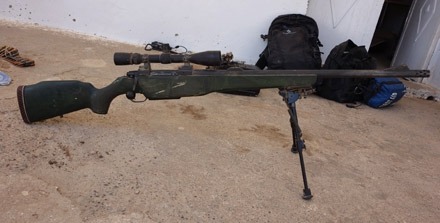The European Parliament discussed this week the EU arms industry and export policy. The topic has received new urgency following negligent reporting by individual member states. Some countries are not always clear on where their arms export go. What makes the matter more worrisome is that the weapons may end up in the hands of terrorist organizations.
EU member states are major global arms exporters, accounting for about 38 billion euro in exports in 2013, thereof 73 percent to non-EU countries. Germany, France, United Kingdom and Italy are the biggest exporters. The world arms trade is dominated by the US and Russia, which together accounted for 58 % of total exports in 2010 – 2014 according to SIPRI (Stockholm International Peace Research Institute).
At a meeting on September 21, the European Parliament’s subcommittee on Security and Defence discussed a draft report on EU’s arms export. Rapporteur Bodil Valero, from the Swedish Environment party, presented the draft which will be amended in a second meeting in October and put to the vote of the parliament in December.
With a background in reviewing Swedish arms control legislation, Ms Valero underlined that arms differ from other commodities and its export must be subject to control. The Parliament acts a watchdog against national governments and the European Council who publishes annual reports with statistics on arms exports.
Due to reduced domestic demand for military equipment in Europe, the European arms industry has been looking for new markets in recent years. However, weapons often end up in the wrong hands. Bodil Valero stressed that keeping up local employment is no valid reason for arms export.
The draft report quotes another report (“Exporting tomorrow’s organized crime”) by Europol, EU’s law enforcement agency, according to which firearms exported to third countries have found their way back to Europe with “unprecedented ease” and fallen into the hand of terrorists. This was the case with the weapons used in the recent terrorist attacks in Brussels, Paris and Copenhagen.
As regards the Islamic State (IS), their heavy weapons which have been taken as war trophy or been acquired in the black market, may originate in Europe. “We can only guess,” Bodil Valero says. Without singling out any EU member state as the country of origin, there is a real risk that arms exported from the EU have ended up in the hands of ISIS.
EU is facing a dilemma. If it exports weapons to other countries like Ukraine or semi-independent entities like Kurdistan, to help them defend themselves, the weapons may fuel ongoing wars or be lost to terrorist organizations. On the other hand, without weapons for defense and deterrence, the other side will get the upper-hand.
Judging from the debate in the subcommittee, there are those who favor EU export to other countries for self-defense and those who want to restrict it even more, especially when the importing countries are violating human rights and using the weapons to subdue their own populations.
A member of the committee remarked that the report should reflect the differences in arms exports by country. Member states are required to report their arms export but some countries are negligent in their reporting.
Only 21 member states made full contributions to EU’s statistics on arms export. Greece did not provide any data at all, Germany and United Kingdom did not submit any data on actual arms export, and France provided a total figure without any breakdown.
Member states are free to export arms but since 2008 they are bound of a European Council “Common Position” which defines common rules governing control of exports of military technology and equipment. A member of the committee stated that the decision has been in a “limbo” since then and that the situation has rather deteriorated.
The decision lays down four criteria for denying export licenses and four criteria which should be taken into account. The criteria are baselines and member states can apply a stricter policy. The draft report calls on member states to ensure a stricter application of the criteria and to ensure a coherent approach to embargos.
If this is enough for coordinating the export policies of the member states and restricting the arms sales to countries who use them to prolong armed conflicts, attack another country, support terrorism or violate human rights – just to mention some of the criteria – remains to be seen after the adoption by the parliament of the final report.
Brussels Times Correspondent

